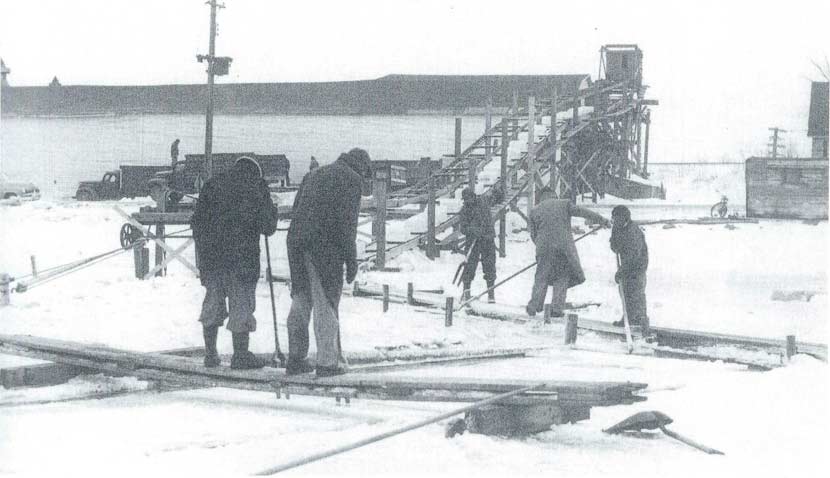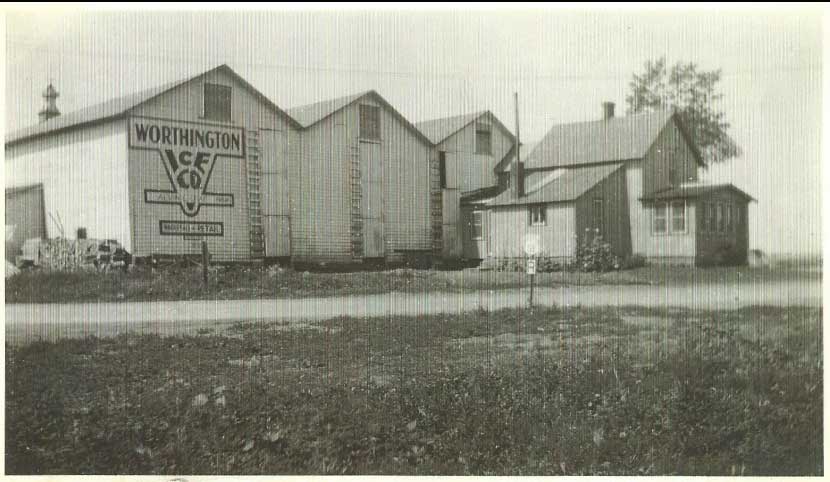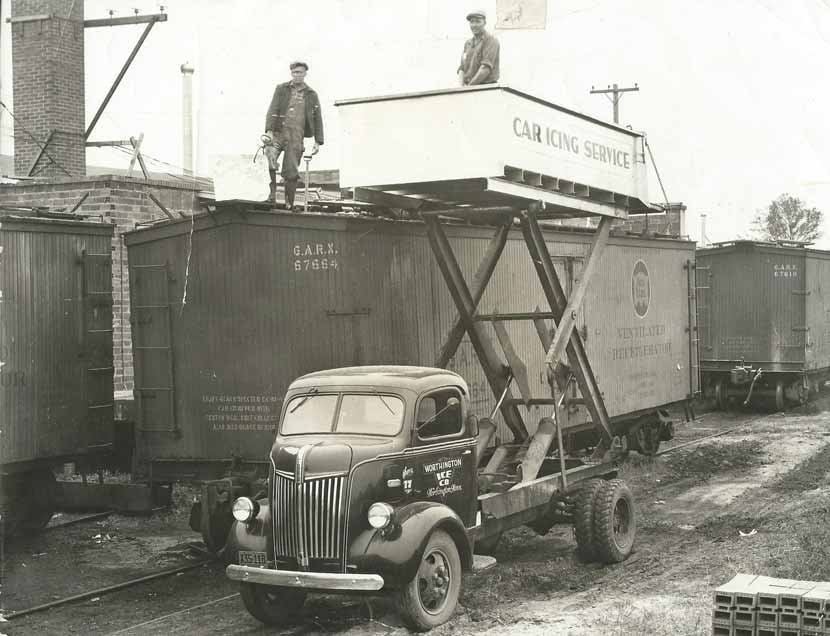Cache not at posted coordinates but if you look closer at the page you can find the cache coordinates
Something that may have been done in the lakes of the Dayton Areas was ice harvesting. Without refrigeration the early settlers would harvest ice and keep it in the sawdust storage sheds until summer when it was needed to cool food and other things.
N 45° 11.835' W 93° 30.034' Might be easer to find in winter
A note on the Ice Harvest from Three Rivers Park District!!!
Have you ever thought about how we kept food and drink cold and preserved before we had electric refrigerators in our homes? Well, harvested ice was the answer. Thankfully Minnesota and all the other northern tier states were very fortunate to have many lakes and rivers and very cold winters, which meant a near endless supply of ice for harvesting. Ice harvesting was a very large industry in America for about 150 years, from the early 1800s to the mid-1950s. It was called harvesting because it involved the gathering of a cold-weather “crop.”
In early winter, ice blocks were cut from frozen lakes and rivers. The blocks usually had a thickness of 16-18 inches and were 22 inches square. Each block weighed about 250-300 pounds.
To begin the process, a horse-drawn plow would cut a grid on the lake surface that defined each block to be harvested. Men would finalize the individual blocks by using breaker bars and large five-foot hand saws, but by the 1920s, circular blades on gas engines replaced the horses and plows.
The blocks were floated to the shoreline where they were stored in insulated buildings called ice houses. Sawdust or straw was used to insulate the houses, depending on what was most available locally.

Ice harvesters filling the ice house on Lake Okabena in Worthington. Image courtesy of Tim Graf.
The capacity of the ice house was sized to handle local market needs until the next year's harvest. Well-built and maintained ice houses could preserve ice for a year or up until the next harvest.
These houses ranged from maybe 10-30 tons in small communities and farms to 200,000-300,000 tons in bigger cities.

The ice house building in Worthington. Image courtesy of Tim Graf.
Harvesting ice was a very hard and very cold job. The harvest was done in January and would last for several weeks. Employees included part-timers, such as farmers and carpenters, and anyone who did not have full-time winter work.
The harvests usually ran 24 hours per day! Imagine working the night shift on a cold winter night with only the moonlight and kerosene lanterns for illumination, all the while being near open water where the ice had been cut out.
ICE DELIVERIES

Ice harvesters icing a railroad reefer (refrigerator) car in Worthington. Image courtesy of Tim Graf.
In spring, summer and fall, ice was delivered to homes, businesses and railroads for preserving food. Early delivery was by horse-drawn wagons and by the 1920s, ice was delivered by truck.
Depending on the outdoor temperatures, the quality of insulation in the ice house and how many times the door of the icebox was opened, a home icebox may have needed re-icing a couple times a week, especially during the hot summer months. With no central air conditioning then, kitchen temperatures were often higher than the outside temperatures.
Cross-country railroad shipments of meat and produce may have needed to be re-iced every 200-300 miles along their summer routes.
To order more ice, customers would put a numbered card in the porch window to indicate how many pounds of ice were needed on delivery day. The delivery man would cut the block to the required size and deliver it into the icebox.
The cost was 25 cents per 100 pounds in the 1930s. But remember, wages were maybe 25-30 cents per hour.
Tim Graf